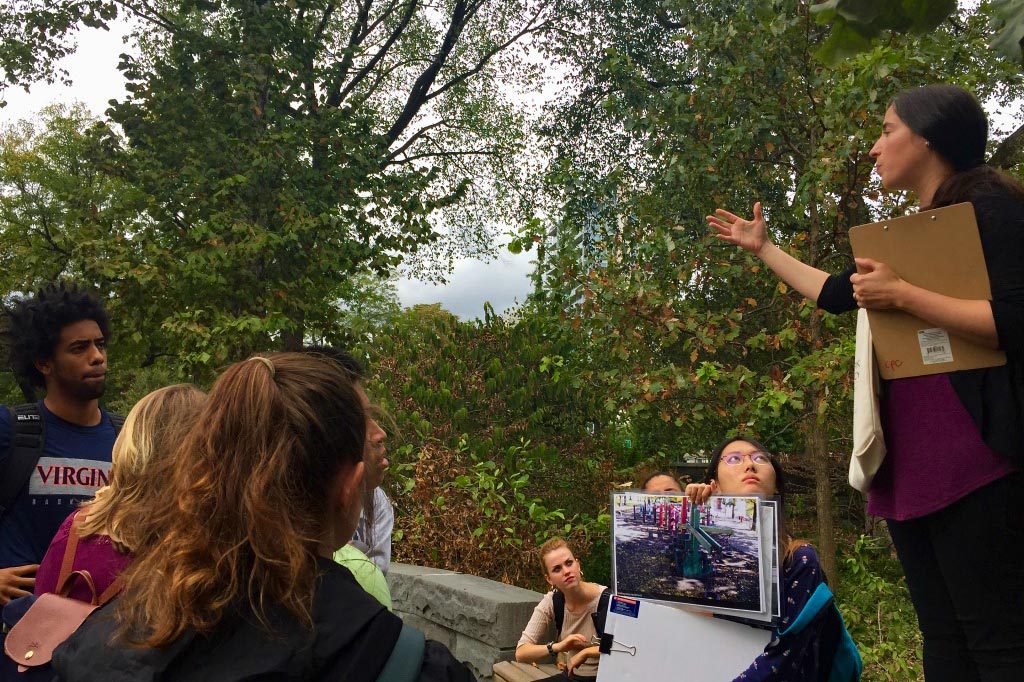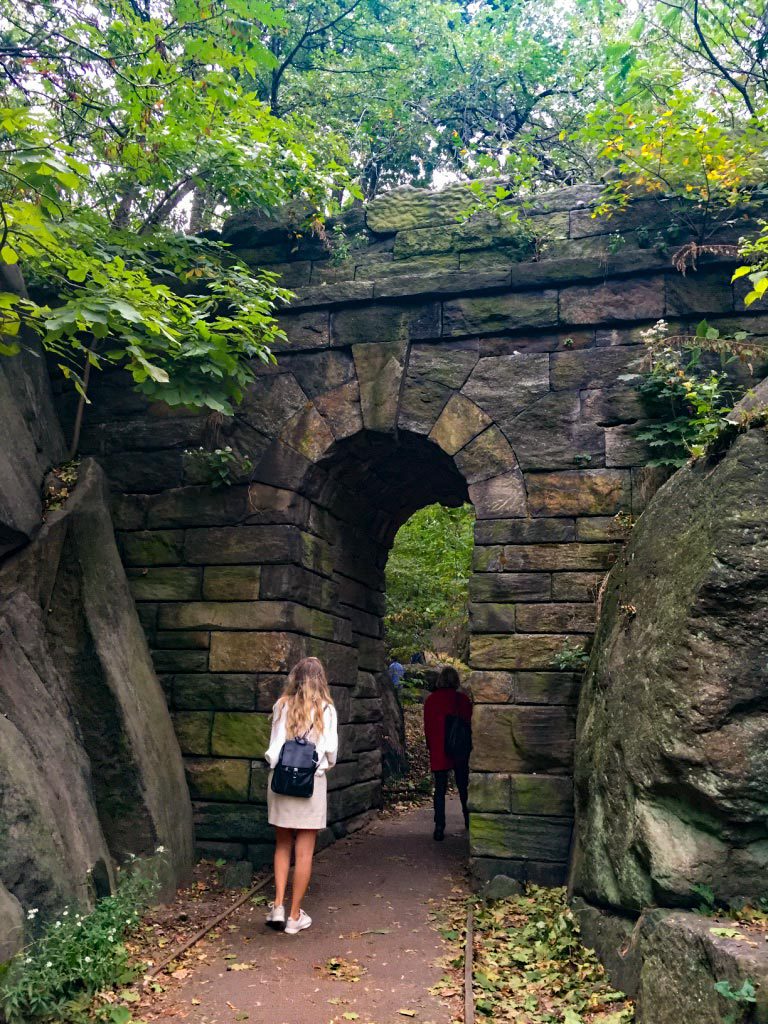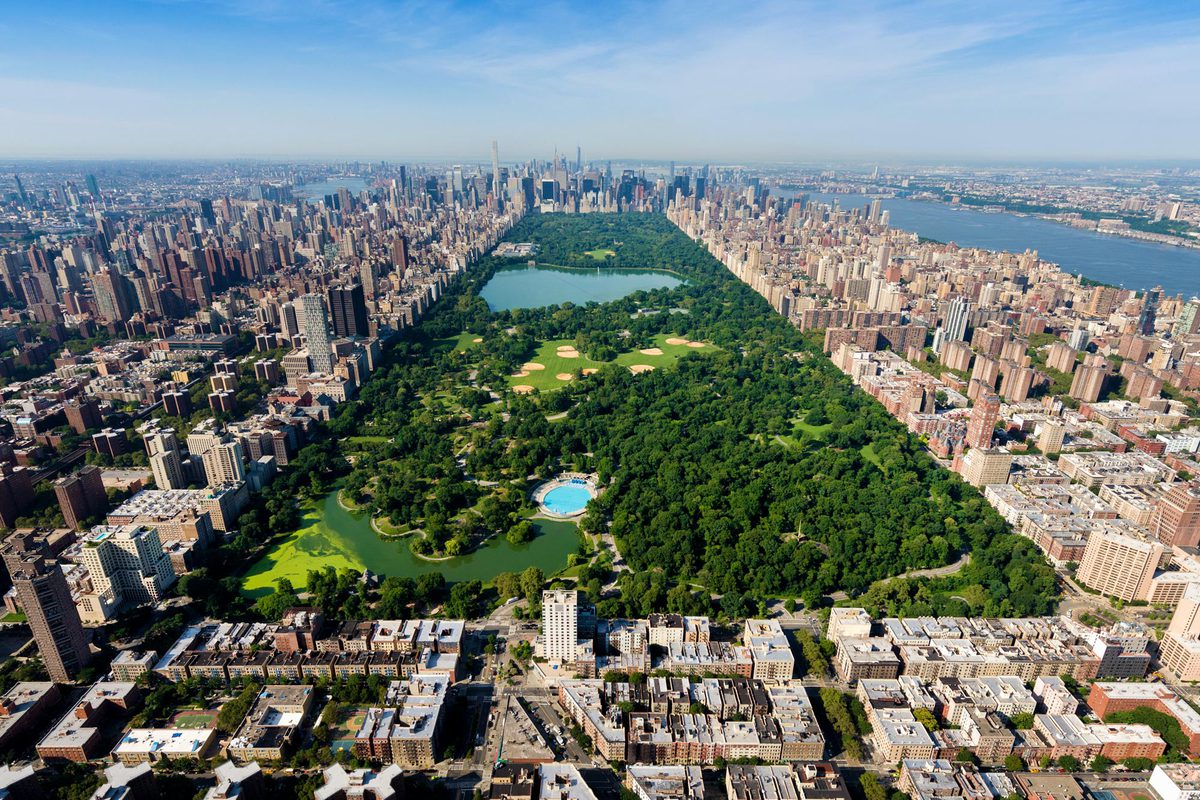Central Park is the most visited urban park in the U.S., one of the most filmed locales in the world and a green oasis for New Yorkers and tourists alike.
This fall, it was also a University of Virginia classroom, at least for a weekend.
Students in landscape architecture professor Elizabeth Meyer’s pavilion seminar visited the park over fall break in October as part of their semester-long study of its past, present and future. The trip was fully funded by the Jefferson Trust and an Andrew Mellon Foundation grant.
The course, “Central Park: Public Space as Conceived, Perceived and Lived,” is one of several pavilion seminars offered by the College of Arts & Sciences and held in classrooms on the Lawn. Offered to third- and fourth-year students each year, the seminars take on big topics that are relevant across disciplines. In Meyer’s case, Central Park was the perfect anchor for exploring urban landscape studies, public space, social history and more.
“At 150 years old, Central Park is an index of every change the public and the city of New York have experienced,” she said.
When Meyer’s students visited Central Park in October, they met with many of the people who help it thrive, including Lane Addonizio, the Central Park Conservancy’s vice president for planning, design and construction; historian Sara Cedar Miller; and several landscape architects and planners working on the revitalization of the Harlem Meer, a lake at the northeast corner of the park, and Lasker Rink in the northern part of the park.

Students heard from leaders at the Central Park Conservancy, including Vice President for Planning, Design and Construction Lane Addonizio. (Contributed photo)
They took a walk through the wooded Ramble with the woodland gardeners who manage and regenerate nature in the middle of New York, and even visited Central Park Conservancy founder Elizabeth Barlow Rogers in her Central Park West apartment, where she showed students her collection of rare books related to the park.
“She was so generous and that was such a special experience,” said Meyer, who also hosted Rogers at UVA earlier in the semester.
“Each person had different experiences within the park, whether it was walking along the paths, examining each tree and bird or helping lay the path for the future of the park,” fourth-year media studies student Sierra Ruiz said.
In all, Meyer said, the students walked more than 30 miles in three days, covering many different facets of the park they spent the semester studying.
“It was a great mix of field work and hearing from experts, and the following Friday back at UVA, I could immediately tell it had been a successful,” she said. “Their conversations in class after the trip were extraordinary. They knew the park so well, and they could see how public space theory played out in the park in ways that are not possible if only reading about it.”

Meyer said experiencing the park firsthand enriched classroom discussions. (Contributed photo)
“While we were walking in the park, I enjoyed hearing the soundscape change,” Ruiz said. “When you walk down the Mall to Bethesda Terrace, it is serene and open with small conversations happening. Once you walk into Bethesda Terrace, the volume raises because there are people playing music, performing and many more people are talking. On the other hand, in the Ramble, it is very, very quiet because the trees hang low, and it makes the space more personal.”
Classmate Hannah Russell-Hunter said the seminar’s readings and discussions gave her a new perspective on one of America’s most famous parks.
“I came into the class with an interest in the history of Central Park, especially its changing uses and policing of public space,” the fourth-year American studies and studio art student said. “I enjoyed being able to move through the park with new knowledge of theories of use of public space and the historical background on the locations I was visiting.”
Working in teams of five, students will use the photos, video and audio they collected to create digital exhibits about three different sections of the park: The Mall/Bethesda Terrace/Rambles promenade and gathering space; the recently restored North Woods and Ravine; and the park’s boundaries, where its landscape meets New York City blocks.
In addition to learning through their field immersion in Central Park, the students are spending time with archival materials from UVA’s Albert and Shirley Small Special Collections Library, which holds the park’s annual reports dating to the 19th century, among other unique materials such as stereoscopic photo viewers, tourist guide books and historic maps. Instruction librarian Krystal Appiah and UVA Landscape Studies Initiative project manager Allison James assisted with the seminar workshop in the Special Collections Library.
Experts in UVA’s Scholars’ Lab, including geographic information system mapping specialists Chris Gist and Drew MacQueen, are helping students with the technical aspects of their digital exhibits. Once complete, these projects will contribute to open-source digital resources for teaching landscape history created by the Landscape Studies Initiative within the UVA Center for Cultural Landscapes. The Mellon Foundation funded the planning and pilot phase of this digital platform built around Rogers’ textbook, “Landscape Design: A Cultural and Architectural History.”
Meyer is excited to see the seminar’s final projects, especially because her 15 students have such varied academic interests.
“Many upper-level seminars include mostly students in one major, but this one has students with very different expertise and interests, and everyone brings something different to the table,” she said. “One student grew up in Bologna [Italy]; he has lived public space in a way that many Americans have not.” Other students, she noted, are studying fields as varied as economics, media studies, politics, American studies and kinesiology.
Ruiz loved the format of the pavilion seminar – both the interdisciplinary focus and the historic location.
“I wanted to learn things outside of the College [of Arts & Sciences] and also embrace Jefferson’s original vision of the Rotunda and the Lawn,” she said. “When the University was created, all classes took place on the Lawn and in the Rotunda, so the pavilion seminar really helps me experience that originality.”
Media Contact
Article Information
November 22, 2019
/content/walk-park-central-park-becomes-classroom-15-uva-students

